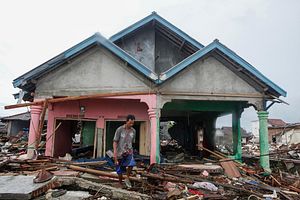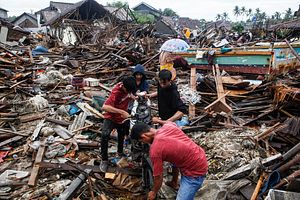On December 22, 2018, a tsunami devastated the Sunda Strait in Indonesia’s Banten and Lampung regions. The tsunami was triggered by the Anak Krakatau volcano, which has been spewing ash and lava for months. On December 22, a 64-hectare (158-acre) section of the volcano’s southwest side collapsed into the sea, an Indonesian official said.
People living in coastal areas reported not seeing or feeling any warning signs before the high waves arrived.
According to the Indonesian National Board for Disaster Management (BNPB), as of December 25 as many as 429 people died, 1,459 were injured, and 154 people were missing as a result of the tsunami.
Physical losses include damages to 681 housing units, 69 hotel and villa units, 420 boats and ships, 60 stalls and shops, and dozens of damaged vehicles.
Hundreds of rescue team members continue to search for tsunami victims along the Sunda Strait while authorities warn that additional tsunamis are possible as the volcano continues to erupt.
One of the hardest hit areas was the Pandenglang district, a lively beach tourist area with hotels and villas lining the coast. The tsunami occurred during a long holiday and the area was packed with people. The absence of tsunami early warnings caused a significant number of casualties because the community did not have the opportunity to evacuate before the wave arrived.
The Meteorology, Climatology and Geophysical Agency (BMKG ) detected Anak Krakatau volcano erupting several times before the tsunami.
In October 2018, an earthquake triggered a tsunami that struck Central Sulawesi, killing an estimated 2,100 people. The Sunda Strait tsunami occurred days before the anniversary of the devastating 2004 Indian Ocean tsunami that killed approximately 230,000 people across 14 countries, including more than 130,000 in Indonesia.
Agoes Rudianto is a Jakarta-based independent photographer.

















































